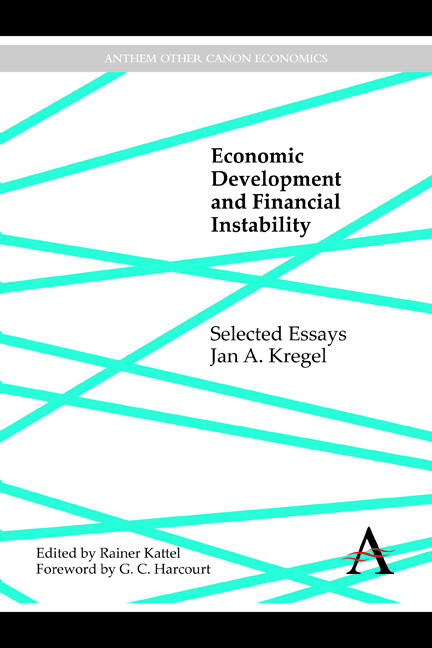Book contents
- Frontmatter
- Contents
- Foreword
- Publication History
- I Theoretical Discussions
- II Finance for Development
- III The Crisis in the US and the EU
- 16 Alternative Economic Analyses of German Monetary and Economic Unification: Monetarist and Post Keynesian
- 17 Currency Stabilization through Full Employment: Can EMU Combine Price Stability with Employment and Income Growth?
- 18 Minsky's “Cushions of Safety,” Systemic Risk and the Crisis in the Subprime Mortgage Market
- 19 Why Don't the Bailouts Work? Design of a New Financial System versus a Return to Normalcy
- 20 Is This the Minsky Moment for Reform of Financial Regulation?
- 21 Debtors' Crisis or Creditors' Crisis? Who Pays for the European Sovereign and Subprime Mortgage Losses?
- 22 Six Lessons from the Euro Crisis
- 23 Minsky and the Narrow Banking Proposal: No Solution for Financial Reform
- Index
21 - Debtors' Crisis or Creditors' Crisis? Who Pays for the European Sovereign and Subprime Mortgage Losses?
from III - The Crisis in the US and the EU
Published online by Cambridge University Press: 05 November 2014
- Frontmatter
- Contents
- Foreword
- Publication History
- I Theoretical Discussions
- II Finance for Development
- III The Crisis in the US and the EU
- 16 Alternative Economic Analyses of German Monetary and Economic Unification: Monetarist and Post Keynesian
- 17 Currency Stabilization through Full Employment: Can EMU Combine Price Stability with Employment and Income Growth?
- 18 Minsky's “Cushions of Safety,” Systemic Risk and the Crisis in the Subprime Mortgage Market
- 19 Why Don't the Bailouts Work? Design of a New Financial System versus a Return to Normalcy
- 20 Is This the Minsky Moment for Reform of Financial Regulation?
- 21 Debtors' Crisis or Creditors' Crisis? Who Pays for the European Sovereign and Subprime Mortgage Losses?
- 22 Six Lessons from the Euro Crisis
- 23 Minsky and the Narrow Banking Proposal: No Solution for Financial Reform
- Index
Summary
A Brief History of Sovereign Debt Resolution
The aftermath of the Latin American debt crisis was dominated by discussions of how to distribute the costs of the International Monetary Fund (IMF) and developed country financial support to insolvent government borrowers. Since US banks would have been technically insolvent had the losses on their lending to Latin American borrowers been recognized, it was impossible to suggest losses for the private lenders. Instead, the Federal Reserve adopted a policy of “forbearance,” which placed the onus on the borrowers to meet the full value of their loans.
One of the difficulties of distributing the costs of debt restructuring was reaching agreement among multiple creditors to new payment terms. The introduction of collective action clauses (CAC) into bond indentures was suggested as a means of facilitating qualified majority decisions to adopt debt restructuring. By the end of the 1990s virtually all new issues of sovereign bonds included such CACs.
The same issues of the appropriate division of losses from financial crisis resurfaced after the Asian crisis of 1997. To deal with such problems, in 2001 the IMF proposed a sovereign debt resolution mechanism (SDRM). Originally proposed by the United Nations Conference on Trade and Development on behalf of developing countries in the 1970s debt crisis, it was not adopted after the Asian crisis due to the objections of developing countries that it would be inappropriate for a protected creditor (the IMF) to be the agent operating the mechanism.
- Type
- Chapter
- Information
- Economic Development and Financial InstabilitySelected Essays, pp. 325 - 336Publisher: Anthem PressPrint publication year: 2014



